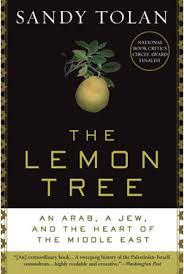Today, March 30, is Palestinian Land Day, a day set aside to mark a horrific moment on this date in 1976 in relations between Israeli citizens (both Jewish and Arab) and Palestinians.
I had not intended to write today in this series (see previous entries on March 3, February 8, and February 4), but when I learned of the significance of this date, I felt it right to acknowledge history. I make no claim to expertise on this event or its celebration, but given the fact that few news outlets in the United States report much news about nonviolent events among Palestinians, and because I did see some shocking disparities in land and water allocation (with Palestinians at considerable disadvantage) during my visit in 2014, I decided to share this information.
Here is an excerpt from a post of two years ago in the +972 blog…..
On that dreadful day 38 years ago, in response to Israel’s announcement of a plan to expropriate thousands of acres of Palestinian land for “security and settlement purposes,” a general strike and marches were organized in Palestinian towns within Israel, from the Galilee to the Negev. The night before, in a last-ditch attempt to block the planned protests, the government imposed a curfew on the Palestinian villages of Sakhnin, Arraba, Deir Hanna, Tur’an, Tamra and Kabul, in the Western Galilee. The curfew failed; citizens took to the streets. Palestinian communities in the West Bank and Gaza, as well as those in the refugee communities across the Middle East, joined in solidarity demonstrations.
In the ensuing confrontations with the Israeli army and police, six Palestinian citizens of Israel were killed, about 100 wounded and hundreds arrested. The day lives on, fresh in the Palestinian memory, since today, as in 1976, the conflict is not limited to Israel’s illegal occupation of the West Bank and Gaza Strip but is ever-present in the country’s treatment of its own Palestinian Arab citizens.
You can read the rest of the blog here. And here is a link to Wikipedia on the subject of Land Day, and here is a link to the report in today’s Haaretz daily newspaper in Israel about the strike being carried out by Israeli Arabs.
As I continue to learn more about the land, its history, and the current situation, I will offer other information.
What remains clear is that contest between these two portions of humanity is far from over. And my prayer remains, on this day and every day, that there be no more martyrs of any type for any reason. There is already enough blood to go around.

 nd their lives are intertwined not by romance but by the fact that when Dalia’s parents emigrated from their native Bulgaria (she was a small child) they occupied the home of Bashir’s family in Ramla which had been confiscated by the Israeli government after the war of 1948 (and the Palestinian residents had fled the town).
nd their lives are intertwined not by romance but by the fact that when Dalia’s parents emigrated from their native Bulgaria (she was a small child) they occupied the home of Bashir’s family in Ramla which had been confiscated by the Israeli government after the war of 1948 (and the Palestinian residents had fled the town).